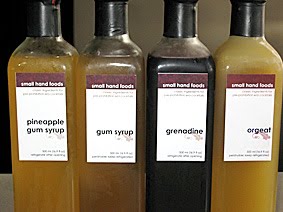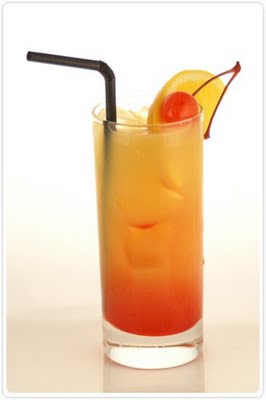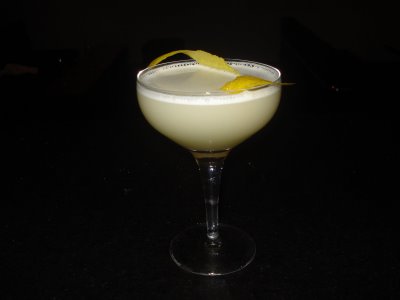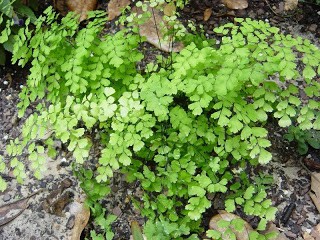There’s been a bit of a hot debate going on for a while about constructing the perfect margarita. Tommy’s in San Francisco promotes their 100% agave margarita heavily, which uses agave syrup instead of orange liqueur to sweeten it. It makes sense; eliminating the orange aspect makes the tequila flavor shine through. But there’s a problem with this.
As you dive into the world of classic cocktails, you begin to recognize cocktail families. Some are familiar, some, less so:
Sour: spirit, citrus, sweetener, often egg white
Fizz: sour with a carbonated aspect (soda, sparkling wine, etc.)
Cocktail: spirit, sugar, bitters, water (dilution from ice suffices)
Improved/Fancy Cocktail: spirit, flavored sweetener, bittering component, perhaps an aperitif wine…
You start to recognize the patterns everywhere. You read the menu description of a bar’s “Apple Orchard” (Calvados, Grand Marnier, lemon juice, orange bitters) and you understand that it is just a modified sidecar. This is both an advantage and a disadvantage. It’s great to know these formulae. Understanding what makes a sour delicious means it’s easy to begin to substitute the base spirit for another, swap flavored sweeteners or acid, etc…
It also means it’s a lot harder to be surprised. So when the Tommy’s-style margarita started making the rounds in San Francisco, I was a little confused. Because despite David Wondrich’s article about the history of the tequila daisy, people still don’t seem to talk about the fact that “margarita” is the Spanish word for “daisy.” And a daisy is an entire class of cocktail, comprised of spirit, citrus and flavored sweetener.
The most common sweeteners for daisies, historically, are yellow Chartreuse, grenadine, raspberry syrup and… curaçao. Curaçao, the orange liqueur in said margarita.
I like a Tommy’s margarita. I do. Quality tequila, fresh lime and clean sweetener? Delicious. It’s just that I don’t think it’s actually a margarita. The curaçao (or whatever version of orange liqueur you use) is what makes it a margarita, aka a tequila daisy, and not just a tequila daiquiri.
For the record, here’s how I make a margarita. (Note that I offset the citrus with simple syrup. You can invert the proportions of lime and curaçao and eliminate the simple syrup, but this makes the drink a bit boozy for my taste.)
Margarita
1 1/2 oz 100% agave tequila
1 oz fresh lime juice
3/4 oz Cointreau or good curaçao
1/4 oz 1-to-1 simple syrup
‘Shake all ingredients over ice and strain into a double old-fashioned glass filled with fresh ice and rimmed with salt if desired, or strain into a chilled cocktail glass or coupe.




 I read cookbooks like novels. Cover to cover. You know how a lot of dudes have stacks of books in their bathrooms? My stacks are cookbooks. (And I like to take baths.)
I read cookbooks like novels. Cover to cover. You know how a lot of dudes have stacks of books in their bathrooms? My stacks are cookbooks. (And I like to take baths.) Capillaire is a gum syrup of sorts seasoned with maidenhair fern and orange flower water. There are many varieties of maidenhair fern, but the one called for in this recipe is Adiantum pedatum, or North American maidenhair. Evidently the plant is mildly toxic when fresh, but neutralized when cooked. (Much like apricot kernels, so I’m in familiar territory here.) Capillaire syrup was originally used to soothe throat and lung ailments. I’ve been looking for maidenhair fern with no success yet. I may have to buy a bunch of plants from an organic nursery and dry them.
Capillaire is a gum syrup of sorts seasoned with maidenhair fern and orange flower water. There are many varieties of maidenhair fern, but the one called for in this recipe is Adiantum pedatum, or North American maidenhair. Evidently the plant is mildly toxic when fresh, but neutralized when cooked. (Much like apricot kernels, so I’m in familiar territory here.) Capillaire syrup was originally used to soothe throat and lung ailments. I’ve been looking for maidenhair fern with no success yet. I may have to buy a bunch of plants from an organic nursery and dry them.